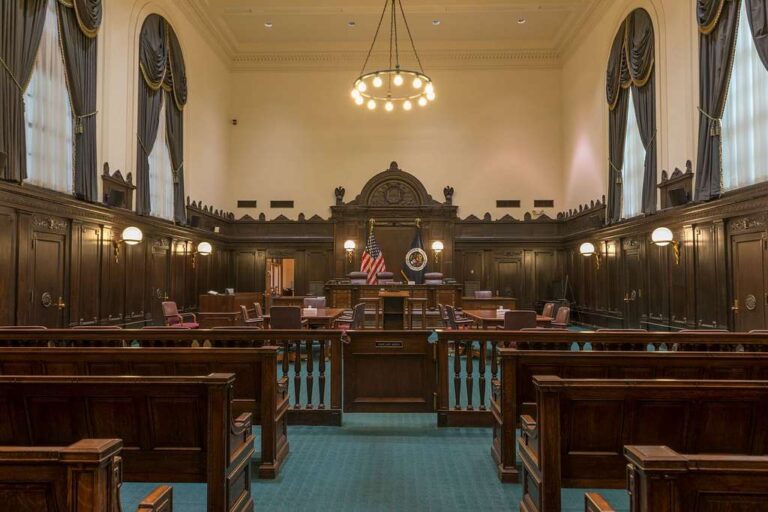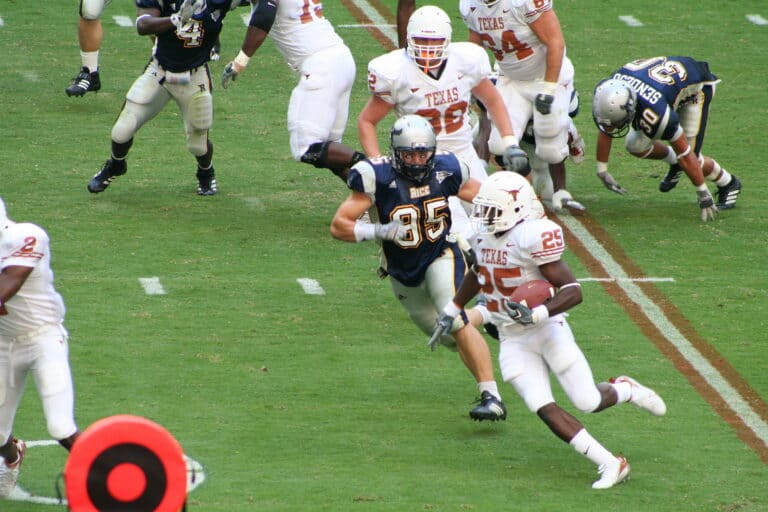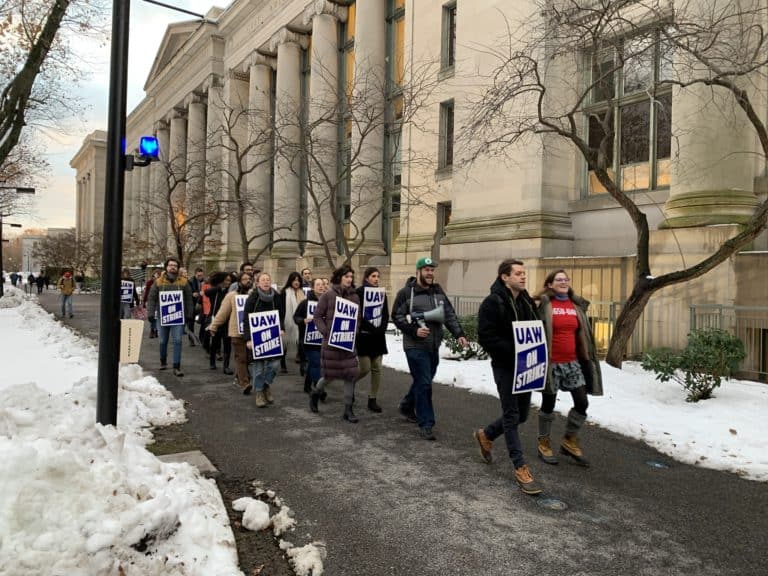Today the workplace looks much different than it did when the National Labor Relations Act first came into being, particularly in terms of the way workers communicate with one another and their employers. As this transformation has taken place, a crucial question for workers is whether labor law protects their activities online.
The National Labor Relations Board has largely protected social media activity as “concerted activity” for “mutual aid or protection” under §7 of the NLRA, analogizing online activity to more traditional forms of communication. This protection is a good thing, both for workers and for the future of labor law, a field often criticized as incapable of adapting to changing times. But a larger question raised by these cases is the significance of organizing online. As the cases described below explain, §7 covers communications over email, Facebook, and Twitter, but the kinds of communications protected may be poor replacements for in-person organizing.
Background: Purple Communications
In Purple Communications, the Board held that employees could use their company email addresses to engage in the concerted activities for mutual aid or protection protected by §7. As described on this blog, the Board overturned an earlier decision that denied any NLRA right to use employer email systems. In its decision, the Board discussed the realities of the modern workplace at length:
The Board and the Supreme Court have recognized the workplace, and, when appropriate, a particular location in the workplace, as “the natural gathering place” for employees to communicate with each other…In many workplaces, email has effectively become a “natural gathering place”…Neither the fact that email exists in a virtual (rather than physical) space, nor the fact that it allows conversations to multiply and spread more quickly than face-to-face communication, reduces its centrality to employees’ discussions, including their Section 7-protected discussions about terms and conditions of employment.
The Board specifically noted the potential utility of email as an organizing tool: “If anything, email’s effectiveness as a mechanism for quickly sharing information and views increases its importance to employee communication.”
Workers’ Social Media Activities and Employers’ Social Media Policies: Chipotle
Like in Purple Communications, the Board has recognized the realities of life in the digital age and protected employees’ social media activities when they are public postings about employment terms and conditions.
Recently, an NLRB Administrative Law Judge found in favor of a Chipotle employee who tweeted critically about the restaurant. The employee, James Kennedy, tweeted about an article describing snow day policies that required hourly workers to work despite the shut down of public transportation. Kennedy addressed the tweet to Chipotle’s Communications Director. Kennedy also tweeted responses to customers posting about Chipotle. One customer wrote “Free chipotle is the best thanks,” and Kennedy replied “nothing is free, only cheap #labor. Crew members only make $8.50hr how much is that steak bowl really?” Chipotle asked Kennedy to remove the tweets, telling him that they violated their (now outdated) social media policy.
The ALJ concluded that the tweets were concerted activity for mutual aid or protection and so protected by §7. The ALJ first focused on the subject matter of the tweets: “Kennedy’s tweets concerned wages and working conditions—employees’ pay rates and being required to work on snow days…The issues raised in Kennedy’s tweets are not purely individual concerns, pertaining only to Kennedy…Receiving low hourly wages and being required to report to work despite heavy snow are issues common to many of Chipotle’s hourly workers nationwide, and certainly to those at the Havertown restaurant.”
Second, with respect to the “concerted” requirement of §7, the ALJ emphasized the public nature of these postings. Though Kennedy did not consult or discuss his tweets with his coworkers beforehand, the ALJ concluded that because they were publicly visible, “these postings had the purpose of educating the public and creating sympathy and support for hourly workers in general and Chipotle’s workers in specific,” making them concerted activity under Meyers II. Because §7 protects those tweets, Chipotle violated §8(a)(1) by asking Kennedy to delete them.
Organizing Online: A Word of Caution
Board protection of workers’ activities online bodes well for the use of social media and other online tools in organizing, something commentators have noted as crucial to the future of organized labor in today’s changing workplace. Organizing online via existing social media platforms and stand-alone sites for gaining public attention and support, scholars argue, is vital to the longevity of the NLRA and organized labor more generally. And the use of social media in organizing more generally has been noted extensively.
It is true that the workplace and workforce have changed tremendously since the NLRA was passed, and it is crucial that the Board take these changes into account when applying the Act and protect activities online. But the frequent focus on organizing in the digital age can obscure problems with organizing online.
First, as some have noted, social media tools are not always as egalitarian as they may seem (not all workers have easy access to smartphones and WiFi), so they are not a complete substitute for in-person organizing for all workers. Next, though digital organizing can lead to high levels of engagement online, it can also lead to isolation among participants who aren’t communicating with one another in the back-and-forth way central to collective action.
But more significantly, the protection of online organizing should not overshadow the need for continued (if not expanded) protection of in-person organizing activity. In Chipotle, Kennedy was not fired for his tweets (he was asked to delete them, which violated his §7 rights, so the Board correctly held in his favor). Instead, Kennedy was fired for something else: he circulated a petition in person among his co-workers asking management to improve its implementation of the restaurant’s break policy. Kennedy and his manager got into an altercation about the petition, and he was fired. The Board found an unfair labor practice here as well and ordered Chipotle to reinstate Kennedy, but the case shows the continued need for protection of in-person organizing. Though Kennedy may have been able to circulate a petition among his co-workers and even submit the petition to management digitally, ultimately he and his co-workers would have had to discuss the petition in-person with management (and deal with management retaliation, as was the case in Chipotle) in order to effectuate actual change.
To conclude, though online organizing, through social media and other forms of digital communication, is a reality of organizing in the modern workspace, it is not an adequate substitute for in-person communication, so while the Board is correct to protect online activities, it should not ignore the continued significance of in-person organizing, which still needs vigorous protection.






Daily News & Commentary
Start your day with our roundup of the latest labor developments. See all
November 28
Lawsuit against EEOC for failure to investigate disparate-impact claims dismissed; DHS to end TPS for Haiti; Appeal of Cemex decision in Ninth Circuit may soon resume
November 27
Amazon wins preliminary injunction against New York’s private sector bargaining law; ALJs resume decisions; and the CFPB intends to make unilateral changes without bargaining.
November 26
In today’s news and commentary, NLRB lawyers urge the 3rd Circuit to follow recent district court cases that declined to enjoin Board proceedings; the percentage of unemployed Americans with a college degree reaches its highest level since tracking began in 1992; and a member of the House proposes a bill that would require secret ballot […]
November 25
In today’s news and commentary, OSHA fines Taylor Foods, Santa Fe raises their living wage, and a date is set for a Senate committee to consider Trump’s NLRB nominee. OSHA has issued an approximately $1.1 million dollar fine to Taylor Farms New Jersey, a subsidiary of Taylor Fresh Foods, after identifying repeated and serious safety […]
November 24
Labor leaders criticize tariffs; White House cancels jobs report; and student organizers launch chaperone program for noncitizens.
November 23
Workers at the Southeastern Pennsylvania Transportation Authority vote to authorize a strike; Washington State legislators consider a bill empowering public employees to bargain over workplace AI implementation; and University of California workers engage in a two-day strike.